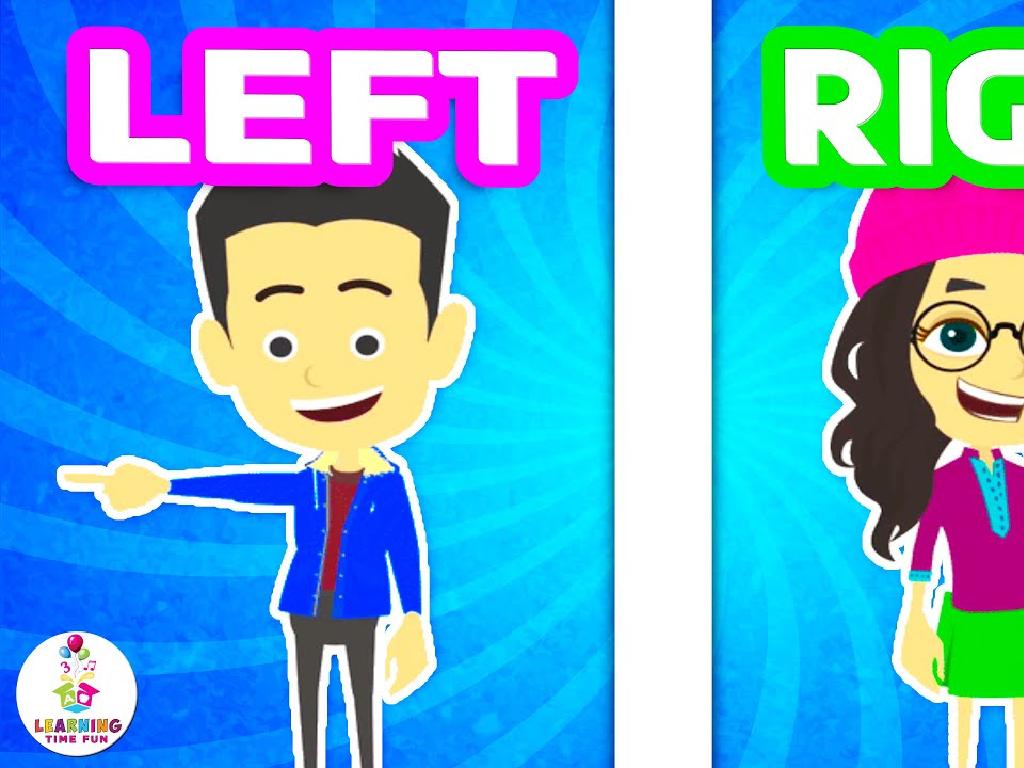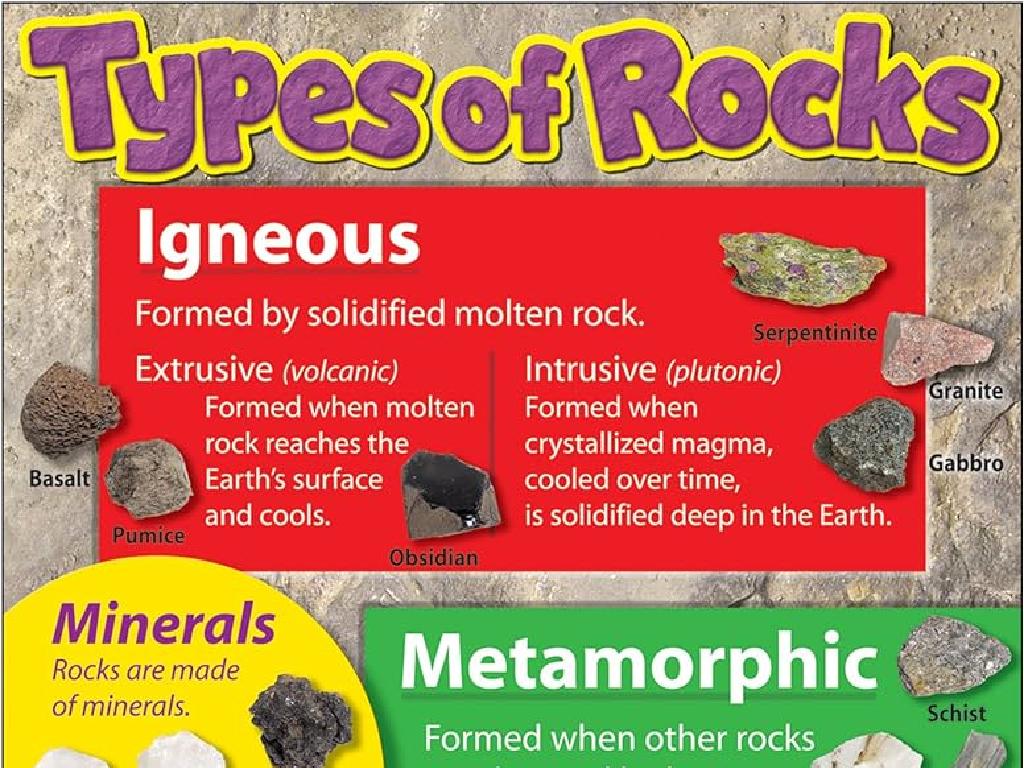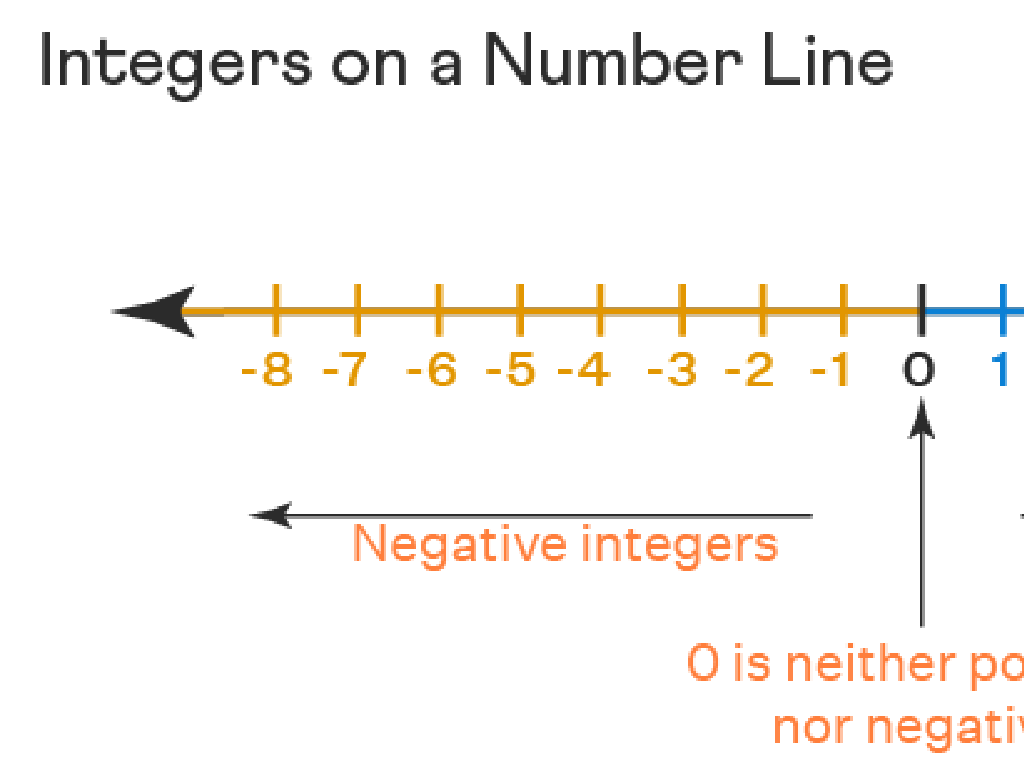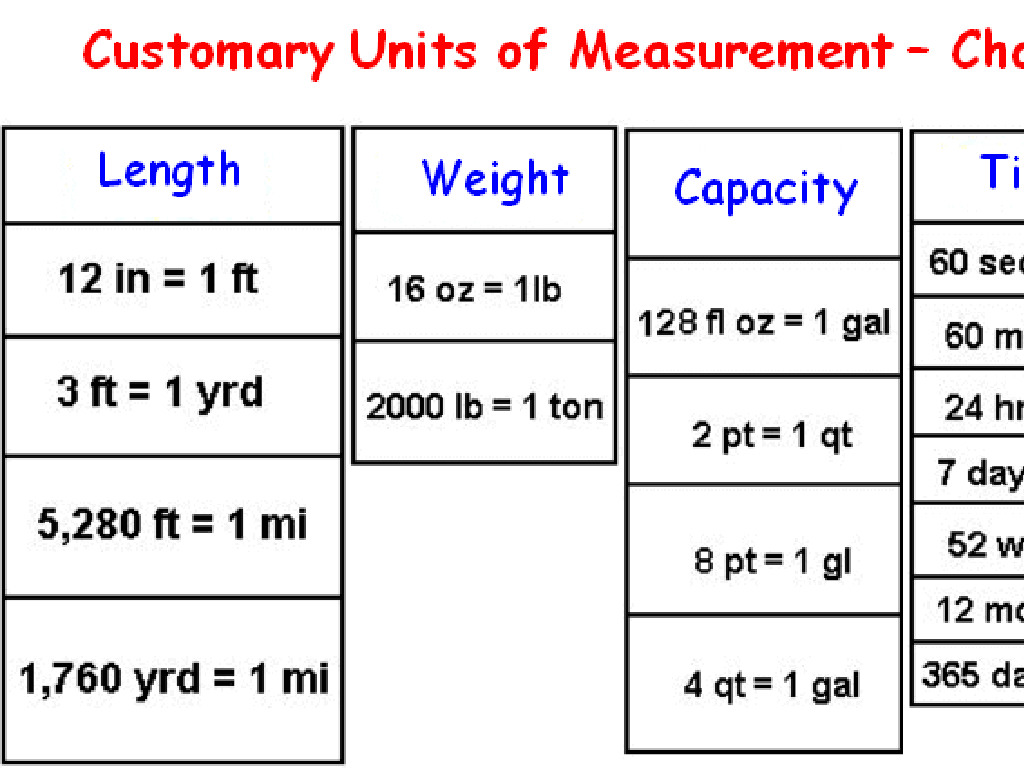Find The Area Or Missing Side Length Of A Rectangle
Subject: Math
Grade: Fourth grade
Topic: Area
Please LOG IN to download the presentation. Access is available to registered users only.
View More Content
Welcome to Area Exploration!
– What is area?
– Area measures the size of a surface
– Exploring rectangles
– A rectangle has 4 sides and 4 right angles
– Finding a rectangle’s area
– Multiply length by width (Area = length x width)
– Solving for missing sides
– Divide area by known side to find the missing side
|
This slide introduces the concept of area and applies it to the specific case of rectangles. Begin by explaining that area is a measure of how much space a shape covers on a flat surface. Then, describe a rectangle, emphasizing its four sides and right angles. Teach students the formula for finding the area of a rectangle by multiplying the length by the width. Finally, demonstrate how to rearrange the area formula to solve for a missing side length when the area and one side length are known. Use visual aids and interactive examples to reinforce learning. Encourage students to think of real-life examples where they might need to find the area or a missing side length of a rectangle, such as when laying out a garden or buying a tablecloth.
Exploring Area: The Size of Surfaces
– Area: Measure of surface size
– Think of area like the space a rug covers on your floor!
– Units: Square inches, feet, etc.
– Just like tiles, we use squares to measure how much space!
– Real-life importance of area
– Area helps us with carpets, painting walls, or planting gardens.
– Calculating area of rectangles
– To find a rectangle’s area, multiply the length by the width.
|
This slide introduces the concept of area to fourth-grade students, emphasizing its practical applications. Area is the size of a two-dimensional surface and is measured in square units, which can be visualized as how many square tiles it would take to cover a surface. Understanding area is crucial for everyday tasks such as buying the right amount of carpet for a room or determining the amount of paint needed for a wall. Engage students by relating the concept to familiar scenarios, such as fitting a tablecloth on a table. Encourage them to think of examples where they might need to calculate area in their own lives. The slide sets the stage for learning how to calculate the area of rectangles, a fundamental skill in geometry.
Discovering Rectangles
– A rectangle’s features
– 4 sides, 4 right angles. Like your desk!
– Opposite sides are equal
– Each pair of opposite sides is the same length.
– Rectangles in our world
– Doors, books, and screens are rectangles.
– Finding area and sides
– Use length x width for area. If one side is missing, divide area by the known side.
|
This slide introduces students to the basic properties of rectangles, which is foundational for understanding how to calculate area and find missing side lengths. Emphasize that all four angles in a rectangle are right angles and that opposite sides are not just parallel but also equal in length. Provide relatable examples of rectangles that students encounter in everyday life to make the concept more tangible. Then, transition to explaining how these properties are used to find the area of a rectangle (length x width) and how to find a missing side length if the area is known. Encourage students to visualize and draw rectangles to reinforce these concepts.
Exploring Area: Rectangles
– Area equals length times width
– Breaking down the formula
– Area is the space inside a rectangle. We multiply the two sides.
– Let’s practice calculating area
– We’ll do examples together to understand better.
– Find missing sides using area
– If we know the area and one side, we can find the other side.
|
This slide introduces the concept of area as it applies to rectangles, providing the basic formula for calculation. Emphasize that area represents the amount of space inside the rectangle and can be found by multiplying the length by the width. Encourage students to participate in a guided practice where they calculate the area of various rectangles with given dimensions. Additionally, demonstrate how to rearrange the formula to solve for a missing side length when the area is known. Provide several practice problems for students to solve individually or in groups, and be ready to assist students who may need help with multiplication or understanding the concept of area.
Finding the Missing Side of a Rectangle
– Understand area of a rectangle
– Area is length times width
– Rearrange area formula
– If area and one side are known, divide area by the known side
– Calculate missing side
– Use the formula: Missing Side = Area ÷ Known Side
– Solve a mystery side example
– Example: Find the width if area is 20 sq units and length is 5 units
|
This slide is aimed at teaching students how to find a missing side of a rectangle when the area is known. Start by reviewing the concept of area as the amount of space inside a rectangle, calculated by multiplying the length by the width. Explain how to rearrange the formula for area to solve for a missing side. Provide a step-by-step guide on how to divide the known area by the known side to find the missing dimension. Conclude with a class activity where students apply this knowledge to solve for a missing side, using the provided example as a starting point. Encourage students to work through the problem and share their solutions.
Real-World Application: Area in Daily Life
– Understanding area’s role
– Example: Garden planning
– Area helps determine how much space a garden needs.
– Activity: Design a garden
– Choose plants, calculate area for each, and draw a plan.
– Use area to plan space
– Consider the area each plant needs to grow healthy.
|
This slide aims to show students the practical use of area in everyday life, specifically in planning a garden. Start by explaining how area is used to measure the size of a surface, like the ground where we plant a garden. Use the example of garden planning to illustrate how knowing the area is essential for deciding how many plants can fit in the space. For the activity, guide students to select various plants and calculate the area each plant requires. Then, they can draw a garden plan on grid paper, using the area calculations to place each plant appropriately. This hands-on activity will help solidify their understanding of area and its importance in real-life scenarios. Provide detailed guidelines for the teacher on how to facilitate this activity, including suggestions for different plants and their space requirements, as well as how to create a scale drawing.
Class Activity: Area Detectives
– Become an Area Detective!
– Find classroom items’ area
– Use rulers to measure length and width of objects like books, desks, etc.
– Work in pairs to measure
– Calculate areas together
– Use the formula: Area = length x width to find each item’s area
|
In this engaging class activity, students will pair up and take on the role of ‘Area Detectives’ to explore the concept of area in a practical way. Provide rulers and have each pair select different items in the classroom to measure, such as books, desks, or the surface of the door. They should record the length and width of each item, then use the formula for the area of a rectangle (Area = length x width) to calculate the area. This hands-on activity not only reinforces their understanding of area but also helps them practice measuring and multiplying. As they work, circulate the room to offer guidance and ensure accuracy. After the activity, have pairs share their findings with the class to discuss the different areas they calculated.
Area Mastery: Homework Challenge
– Congratulations, Area Explorers!
– Complete the area worksheet
– Practice calculating area for different rectangles
– Think of questions for next class
– Any doubts? Write them down!
– Practice finding areas at home
– Use objects at home to visualize area
|
Well done on learning how to find the area of rectangles! For homework, students should complete the provided worksheet to reinforce their understanding. Encourage them to practice with different sized rectangles to become comfortable with the concept. They should also prepare questions about any part of the lesson they found challenging or want to know more about. This will help address any uncertainties in the next class. Additionally, suggest that students use real-life objects, like books or tablets, to visualize and calculate the area, making the concept more tangible and easier to grasp.






